Protein is clearly a necessary nutrient. We need some to survive and a little more to thrive. Athlete-wise, we know it affects training, gaining, and recovery (though we may still disagree on how much is necessary), and most athletes know enough about protein to ensure it’s not limited in their diet even if they don’t seek it out.
In sports nutrition dogma, protein is often treated as an infallible “miracle” nutrient, with the only issue being not getting enough; this is not the view of everyone, though. To some, protein is a nutrient like any other, and only good as far as it’s necessary. To these individuals, excess protein is at best useless and at worst harmful.
Despite the conflicting views, the long-term effects of protein remain inscrutable; there are studies attesting both to its power to improve health as well as to harm it. We can clearly eliminate the beliefs of nutrition extremists—those who recommend hundreds of grams of protein per day, those who recommend less than fifty—but even with the fringe expunged we have a wide range of acceptably normal opinions.
The problem, I think, is that protein—a basic macronutrient—is tangled with concepts of food and diet. As a result, when a person talks about “protein”, they often don’t mean a string of amino acids which provide the human body with the necessary building blocks for survival, they mean a food that contains protein. Some of these foods are better and some are worse, and when collated and studied as a whole they reveal very little about the essential long-term benefits and risks of protein (though they may reveal short-term changes). To understand the long-term picture, we need to look to foods and diets.
Nutrients vs. Foods
The problem of studying a nutrient vs. studying a food (or group of foods) isn’t unique to protein, it’s a well-known quandary of nutrition. On a basic level, we understand that humans need certain essential nutrients to survive—this includes calorie-containing macronutrients (protein, fat, carbs) as well as vitamins and minerals (micronutrients). When we first discovered the existence and essentiality of vitamins and minerals, we began to distill them and put them in pills with the intention of improving health. Unfortunately, aside from documented cases of deficiency or insufficiency, we have yet to see evidence that any vitamin or mineral (or multivitamin) does anything, and certainly does nothing preventative long-term.
On the other hand, we know that increasing our intake of certain micronutrient-containing foods (such as fruits and vegetables) does in fact improve our health long-term. While these foods certainly contain many of the vitamins and minerals we need—and will help prevent insufficiencies—it’s clear that they don’t “work” because of those micronutrients; there’s something else at play.
The fact is, nutrition is more complicated than just the known macro- and micronutrients. It’s not that we’re missing nutrients, though, it’s that the big picture is wildly complicated. Foods contain numerous chemicals that have little-to-no immediate discernible effect but may have affect the long-term in unpredictable ways. Food-based chemicals also interact with each other and with our own physiologies in ways we haven’t learned to predict. I have no doubt that we’ll continue to develop our understanding, but it suffices to say that it’s challenging to predict all the long-term health effects of a diet by looking only at the macro- and micronutrient content of it.
Protein, as a nutrient, gives us no clue as why it might be harmful in large amounts or why differing sources may provide different risks. Protein consists of long chains of amino acids, and while the exact amino acid makeup of a protein will differ from source to source, they will all consist of the same twenty amino acids. Those twenty amino acids, examined in isolation, do not give us any indication of long-term risk; they will be used or excreted, with no apparent carcinogenicity.
As a source of amino acids, different proteins are all as useful as their completeness—the amount of essential amino acids they contain. When looking at short-term biological effects of protein, all complete proteins “work” roughly equally. Tofu, steak, eggs, milk, chicken, and fish all trigger the same biochemical processes at the same level. In addition to this short-term equivalency, we also have a lack of long-term data that would suggest that protein, insofar as it acts as a basic nutrient, cares about its source. Provided all nutritional needs are met, a child can grow into a healthy adult on any type of (healthy) diet just as an adult can grow to a healthy old age.
I use this as a preamble to introduce what I see as a major flaw in studies linking protein to disease, which is this: outside of documented diseases affected by protein or individual amino acids like kidney disease or phenylketonuria, we have no evidence that the nutrient “protein” is harmful; what we have instead is evidence that certain foods that contain large amounts of protein may be harmful. Most studies that attempt to link protein to disease at least tacitly concede that this is true—they include lines like “when … animal protein was controlled for, the association between total protein and all-cause or cancer mortality was eliminated or significantly reduced“. In other words, protein isn’t really the issue. Food choice is.
This may seem like pedantry, but I assure you, I have a point: it’s impossible to assess the risk associated with a high-protein diet by focusing solely on protein content. What we need to do first is assess the risk of the foods that diet contains—to disentangle the nutrient protein from the foods and diets that contain it.
Sidebar: Dietary Protein & IGF-1
One of the better-known possible links between dietary protein and cancer is the hormone IGF-1 (insulin-like growth factor 1). Elevated levels of IGF-1 are often found in a few types of cancer, and dietary protein increases levels of IGF-1 in the body. It’s important to be clear that the link between IGF-1 and the cancers that are characterized by it is only correlational right now, not causal. We can witness the elevated IGF-1, but it may or may not be an important factor in the development of cancer. It may, in fact, be something that develops after the cancer is already present.
This isn’t to say there’s no reason to suspect IGF-1 at all, but it’s certainly a much more complicated topic than the solution of lowering dietary protein would suggest. For one, all dietary proteins increase IGF-1 in a similar manner. Some sources of proteins also increase IGF-1 binding proteins (IGFBP-1) to a greater extent than others, but that is a secondary effect if we’re focused on the ills of IGF-1 itself.
There’s also the issue that carbohydrates increase IGF-1 in a similar manner, which implies that the only real anti-cancer diet would be a ketogenic diet. There are studies underway that are attempting to demonstrate this, and you won’t have to look long or hard to find anecdotes that suggest a ketogenic diet is a cancer killer, but the reality is we currently have no solid human studies that show it to meaningfully impact cancer development or progression (compared to any other healthy diet). It’s also problematic that a ketogenic diet is extremely hard to maintain for the majority of people for long periods of time, and cancer is one of those things that takes a long time to develop and a long time to eradicate. (And, for the record, we’d be talking about a low-protein ketogenic diet, which would be even harder.)
In the end, I think a lot of the hullabaloo about IGF-1 and cancer comes from the animal data we have that suggests certain animals such as mice and worms live longer when they have low levels of IGF-1, which ties into fears about cancer since cancer is so publicly scary. Unfortunately, the link is nowhere near as clean-cut in humans as it is in these much shorter-lived animals, and in fact may be the opposite—higher IGF-1 levels at elderly ages may predict better longevity. Of course, there are also studies that say the opposite. The point is that humans suffer from different longevity-related problems than many other animals (especially ones that live less than a decade), and so it’s premature to assume IGF-1 is either a solid predictor of mortality risk or directly related in a significant manner to cancer development.
The Sources of Proteins & Their Risks
Before we wade in, I must urge caution with using these assessments to determine absolute risk rather than probable risk. The meta-analyses I cite will frequently use a hazard ratio—a specific number, like 1.14 or 0.87—to explain how much higher or lower a person’s risk is based on their diet. These should not be interpreted to be literally true as it’s unlikely we could reach such an accurate guess based on such limited data; we can be confident that they are at least relatively true, however. A protein source that consistently carries a hazard ratio above 1.0 is likely to be risky; a source that is consistently scored below 1.0 is likely to decrease risk.
Furthermore, risk is rarely a straight line. Nearly all foods are perfectly healthy in small amounts, but get less healthy as they’re consumed in excess. Some foods start healthy and get healthier before becoming less-healthy. Some are healthy and get healthier as more are consumed. This is an important consideration as well, though one we’ll concentrate on after reviewing the foods themselves.
In this section, I categorize foods into three categories: healthy/low-risk, neutral/less risky, and more risky. In all cases, we’re talking about probability, so if I say something is “healthy”, it doesn’t mean always and for everyone, but rather for most people in most circumstances based on the data we have.
Healthy & Low-Risk Protein Sources
There are two sources of protein that are routinely found to be either universally beneficial or mostly positive: plant-based proteins and fish.
Plant Protein
Protein from plant sources, such as legumes (including soy), whole grains or pseudograins, and nuts or seeds, is almost unequivocally the healthiest source of protein. Numerous studies either remove plant-based proteins entirely from the risk pool or demonstrate that plant-based proteins are less hazardous, relatively speaking.
Is the benefit of a plant-based protein actually related to the protein it contains? Probably not. As implied in the section above, protein as a nutrient is unlikely to be the factor in the health benefits (or risks) of plants or any other source. Instead, it’s likely that the benefits of a diet high in plant-based proteins is that such a diet is inevitably high in plant-based foods in general. The foods most universally found to be healthy are all plant-based, such as fruits, vegetables, legumes, whole grains, etc. A diet high in plant-based proteins will typically contain more of these foods than one that is not.
As a source of protein, only a handful of plants are considered “good” or even “moderate” sources (see this article for more information). The ones that are good sources, however, are still high-health and low-risk foods.
Fish
Fish is the healthiest animal-based source of protein—in fact, some studies suggest that fish-eating vegetarians (pescovegetarians) have lower all-cause (and specific) mortality than their vegan counterparts. Not all studies agree with this conclusion (that eating some fish may be better than eating no animal product at all), but all studies I’m aware of do point to fish as either a slightly beneficial protein-source, a non-contributor to mortality, or at worst an extremely minor contributor (e.g., clinically insignificant).
Fish’s benefits are more likely to be tied to healthy fats rather than protein, especially the preformed long-chain polyunsaturated omega-3 fats EPA and DHA. While we can convert the plant-based omega-3 fat ALA into these longer-chain versions (the versions we use in our body), conversion is poor and vegans tend to have lower levels than those who eat fish.
Neutral or Less Risky Protein Sources
These protein sources—dairy and white meat—are unlikely to be beneficial to our long-term health (outside of their utility as a source of protein), but are also unlikely to carry much risk. They are relatively “safe”.
Dairy
Most studies on dairy find it to be mostly positive, but there is some conflicting data. Dairy may be more beneficial in terms of cardiovascular risk than cancer risk, but either way data suggest dairy either slightly reduces all-cause mortality or has no clinically significant effect at all. Given that even when dairy is found to be beneficial the improvement is very small, it seems fair to label dairy as a neutral protein source (and not as a beneficial one).
Poultry & Pork (White Meat)
Poultry and pork appear to have little long-term influence our health. The studies that have been performed find no increased risk in all-cause or cause-specific mortality in those who consume greater amounts of white meats (which sometimes includes rabbit), nor do they find any decreased risk as they do with vegetable protein, fish, and occasionally dairy.
It’s important to note that “white meat” is relatively unstudied compared to other protein sources. The data we have mostly agrees, so there’s a fair probability of accuracy, but further research could discern some risk or benefit (though it’s likely to be minimal given our current knowledge).
More Risky Protein Sources
There are three “more risky” protein sources, though the context does matter for each of them. It should also be noted that the three sources—eggs, red meat, and processed meat—are not equivalent in their riskiness, but scale upwards in risk.
Eggs
Eggs are somewhat of a quandary. Most current research does not find much association between egg consumption and health in an otherwise healthy population, but amongst those with diabetes there is a correlation between intake and risk of cardiovascular disease and heart disease (1,2). To complicate matters further, egg intake has also been associated with risk of developing type II diabetes, though perhaps only when the overall diet is akin to those seen in the US; this correlation is only seen in those who eat three or more eggs weekly.
This seemingly odd correlation is at the heart of what makes these sorts of risk comparisons challenging, but we’ll discuss that a bit more later. For now, it’s enough to say that eggs aren’t positively associated with health in any known or meaningful way and may carry a risk in certain circumstances.
Red Meat
Of all the topics in this article, red meat is the most contentious. Across the years, numerous studies have been published on the topic of red meat and all-cause & cause-specific mortality risk, and more than a few systematic reviews and meta-analyses have been compiled, such as this one and this one. Over time, the conclusions of these analyses have softened—which tells us a little about our increasing ability to distinguish signal from noise in the studies—but it’s also important to note that for all the progress made here, we only ever reach neutrality; red meat, for all the devotion it inspires, has never been shown to be “healthy”.
Of course, “healthy” is just a single benchmark by which we judge our food; taste, cultural value, and other aspects are important as well. What the studies indicate isn’t that eating red meat at all is unhealthy, but rather that (unlike other foods) it will never “improve” your health. You can eat red meat (and nearly any food, really) and still be a healthy person with a healthy diet. It should be clear, however, that red meat carries more risk (even if small) than other meats like pork, poultry, and fish and will never be as broadly good for you as a plant-based protein.
Processed Meat
At long last, we reach our final category of meat—processed meat. Of all the protein sources we’ve covered, processed meat has far and away the most evidence of harm. Few, if any, meta-analyses have found processed meat to not carry risk and for that risk to not be greater than any other source of protein. Simply put, processed meat is unhealthy.
As with red meat, this isn’t to say you can never enjoy a slice of bacon, an Italian sub, or a holiday ham. When we talk about risk, we’re talking about dose-response curves, and having an occasional meal with processed meat isn’t going to negatively affect your health anymore than eating a serving of broccoli once a month will meaningfully improve it. If it’s your daily habit, though, then it does carry risk.
Risk, In the Context of Diet
While it may be helpful to “know” that some foods are healthier or less healthy than others, it might be hard to make daily decisions based on the above data. For example, how much fish are we talking about to get a benefit? How much steak can you eat before things get unhealthy? Here, it might be helpful for a visual aid:
This image is from a recent meta-analysis on food groups and all-cause mortality. The authors weren’t specifically investigating the risks associated with protein-containing foods, but they cover many of them nonetheless.
Based on the image, you can get an idea of how risk increases or decreases with intake. Red meat, when consumed at a rate of 50 grams per day, increases risk of all-cause mortality by about 10%—for context, that’s about 10-15 grams of red meat-based protein. Legumes at a rate of 100 grams per day (a little more than half a cup cooked) would decrease risk by about 10%. In the scheme of things, neither is particularly high, but that’s also a pretty small amount of food; you’ll probably eat more than just this.
These risks don’t necessarily cancel each other out, but they do have interplay. I wouldn’t be comfortable saying that you should add up the various risks in your diet, but I would be comfortable saying a diet that is comprised mostly of protein sources that either lower or maintain risk is likely to minimize the effects of riskier foods in that diet, and that diets that are higher in higher-risk proteins are unlikely to be equaled out by the inclusion of small amounts of risk-lowering proteins. In other words, the more protein you get from the better sources, the less impact the “bad” proteins are likely to have—so if you’re worried about the risks of a high-protein diet, focus on getting more protein from legumes, whole grains, fish, dairy and white meat.
This interplay is the likely culprit for why some studies seem to find different results based on the countries included, and why the US in particular seems to fare poorly with certain foods. Foods like eggs and steak have a much different cultural identity here in the United States than they do in Sweden, or Japan, or Kenya. Here, a high consumption of these foods can be seen as a probable indicator of a certain type of a diet, a diet low in the healthy protein sources discussed above. When those foods are in the context of an unhealthy diet, there is nothing to mitigate their potentially harmful effects; in the context of a healthy diet, they may still not be “healthy” per se, but they also aren’t harmful.
What’s the Actual Risk of a High-Protein Diet
This entire article was written based on a question a reader asked me on Facebook, a question I’m afraid I haven’t answered yet: “What if you had to guess the probability that excess complete protein might be fueling some cancers, e.g. 10%? higher?”
This question was asked in reference to a study I mentioned briefly above that found that those with a high-protein diet between the ages of 50 and 65 died much more frequently from cancer. I suppose the difficulty I find with the question is the study itself, which proposes a link between IGF-1 and the development of cancer but then de-links plant-based proteins from the equation. As mentioned before, as far as we know protein affects IGF-1 similarly regardless of the source, and while there may be mitigating factors unique to plants, that would imply the conclusion that cancer is protein intake-dependent—and that the protein-cancer link is IGF-1-mediated—is more complicated than it appears.
It should also be noted that the IGF-1 cancer link is currently only correlative, and only for a handful of cancers (such as prostate and pancreatic)—by no means do we have solid evidence that it is a direct or important factor in the scheme of cancer development. Studies like the one above give us some further information, but must be weighed against data from other sources, specifically when data from other sources suggests that most sources of protein do not increase cancer risk (even as they can be guaranteed to increase IGF-1).
With all of this in mind, my guess is that it’s incorrect to blame excess protein itself; it seems more likely the problem lies with diet in general. Given the preponderance of data to suggest that numerous sources of protein have no negative effect—and often have a positive effect—on cancer risk and mortality, I think it’s hard to pinpoint protein itself as the problem. Protein may indeed be an accurate way to measure an individual’s relative intake of a food such as red meat in certain cases, but ultimately it’s the actual consumption of that food that leads to variances in risk; if two people consume the same amount of protein day-to-day, but one gets 100% from red meat and the other gets 100% from black beans, would you expect both to experience similar levels of risk?
I realize this is a non-answer in some ways; I don’t have a numerical guess to give. It is, however, my best guess. I would be surprised if protein—when weighed against the entirety of a person’s diet, lifestyle, and genetics—is more than a minute factor, and even then only when the protein sources are not otherwise beneficial for our health.
Acting on Data
The question now is what does this actually mean? We covered the proteins that are (probably) better and worse, we’ve asked ourselves whether protein is likely to be a contributing factor in the development of cancer, and we’ve investigated the possible protein/IGF-1/cancer link—but does this have any meaningful relevance to our diet or life?
I think so. At the very least, it suggests that we have better and worse protein sources.
For starters, we should all be eating more vegetable proteins. There’s a common misconception that vegetable proteins aren’t as effective—and certainly not all vegetables are good or high-quality sources of protein—but some vegetable sources (specifically legumes) are excellent! There’s no doubt that increasing your intake of these protein sources is healthy, and everyone would be better off having at least a few meals a week where they are the focus.
Second, if you currently consume ample quantities of red meat, you may wish to scale back. This is controversial, I know, and even I’m not convinced [by the data] that red meat is as dangerous as it’s often painted to be. However(!), I also cannot deny that red meat—as opposed to every other meat out there aside from processed meat—has zero positive data to support it. None. If red meat isn’t unhealthy, it’s certainly not healthy in the same way the veggie protein and fish are either. This doesn’t mean you can’t have it, but it should at least make you think twice about making it your staple protein.
Finally, you should consider the whole of your diet. Where does your protein come from? If you were to weigh the “good” sources against the “bad”, which is higher? I hesitate to recommend an exact ratio of “good” to “bad” (because we don’t have the type of data we need to support such a ratio), but I think there’s a much greater chance of benefit from eating more good (and neutral) proteins than there is if your ratio were more heavily weighted towards the bad side—and similarly, a much greater chance of harm if the latter is true.
Last Word
I made myself a delicious stew of black beans, onions, shishito peppers, and garlic tonight. I didn’t add any meat; no meat was necessary. I got the exact amount of protein I desire from it, and I know it was enough to support everything I want that protein to support. Above supporting my goals, I also want to support my health; long-term, I know I supported that, too.
Protein is a nutrient; protein is also food. Our diet is a complicated mish-mash of nutrients we understand, nutrition we don’t understand, and the foods that contain them. When I look at the data, I’m not convinced that protein, the nutrient, is dangerous. It is clear, however, than certain foods that contain protein are more dangerous than others. It makes sense to minimize those foods and increase our intake of others in their stead.
There’s a lot we don’t understand, and I suspect that in the end there are mitigating factors—diet, lifestyle, exercise, genetics, etc.—that determine precisely how harmful or beneficial both the amounts and types of protein we consume are. In the meantime, we must do as we always do with nutrition: make our best guesses based on the data we have available. We might not have enough data to condemn an individual for their habits, but we certainly can look at the trends and suggest there are better courses in aggregate. It’s those courses I hope to steer you towards.
Questions? Comments? I’m always happy to read (and reply) to them below!
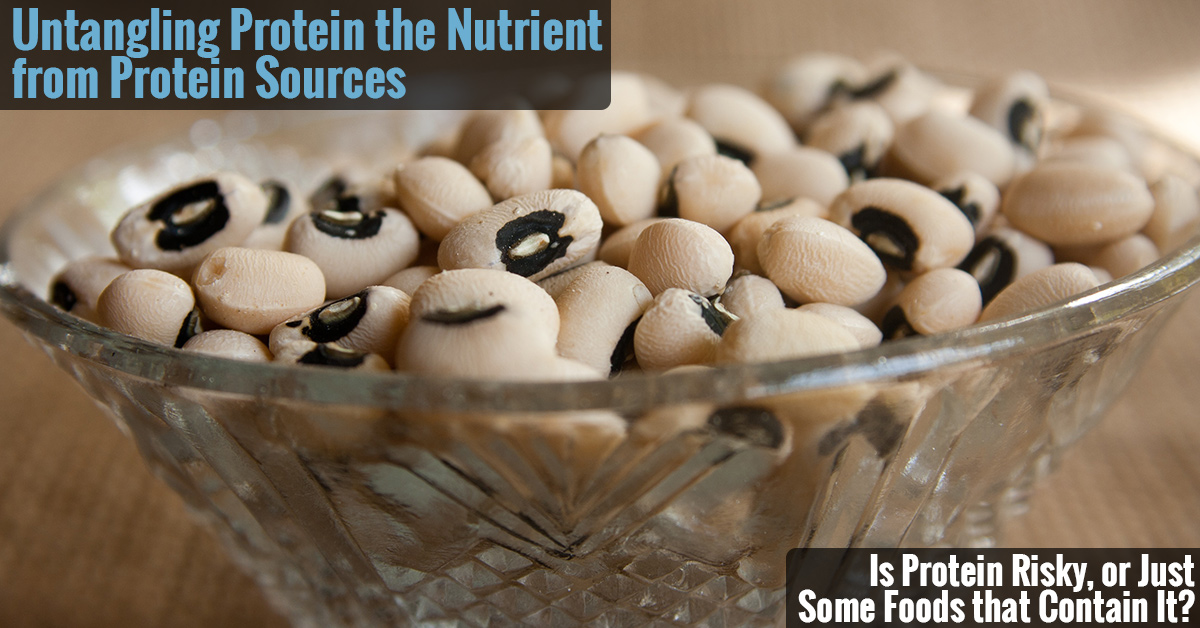



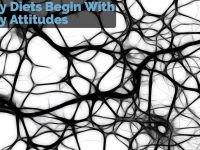
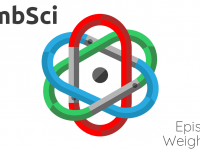
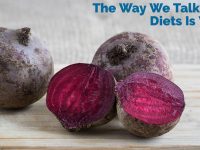

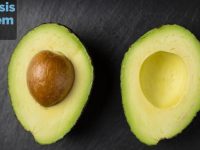
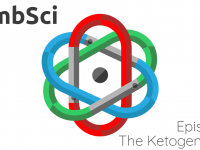






Hello Brian, I recommend you to read this book – especially modules 3.3 and 4.2: http://www.truthseekerz.com/Robert_Morse_-_The_Detox_Miracle_Sourcebook_EBOK.pdf
Great article. Thanks.